Dear Friends,
For so many of us, it is just so much easier to understand our sacred text… in English. Is that OK?
So, too, oddly enough, in 11th century France, when our greatest Torah commentator, Rashi, wrote his commentaries, he would find it helpful to revert to his native French, even though he was fluent in Hebrew, Aramaic, maybe Ladino and likely other European languages.
How do we know this, and what does it mean?
Periodically in Rashi’s signature commentaries when he encountered a difficult word which defied explanation in Hebrew, Rashi explained the problem using French. Such an explanation occurs in this week’s Torah portion. Note the rather technical language in this verse in Leviticus which describes the process for dealing with a dermatological symptom: “When a person has on the skin of the body a swelling, a rash, or a discoloration, and it develops into a scaly affection on the skin of the body, it shall be reported to Aaron the priest…” (Lev 13:2)
The Hebrew word “baheret,” is rendered in English as “discoloration,” though elsewhere we find it translated as “spots,” or “whiteness.” Rashi also likely had multiple options to explain this odd word, and he offered another Hebrew option, “chavaburot,” or spots. To which, Rashi added the phrase, “taie b’la’az.” Or, “taie in Old French.”
Clearly, Rashi was concerned that his readers would be no more clarified by “chavaburot” than with “baheret.” Thus, he sought an alternative, less conflicted term which was more common and not antiquated or foreign, and he turned to the Old French, called “La’az” in Hebrew.
If Rashi can turn to French, literally the lingua Franca of his day, then is there any aversion to using English, today’s lingua Franca, to manage difficult or ancient terminology? Isn’t it more important that our readers can conceptualize and understand the meanings of the Torah verses, than merely be stuck in the Hebrew? Clearly, I am not opposed to studying and learning Hebrew. It is one of my loves. But Rashi clearly was aware that his readers were not as adept in Hebrew as he was, and as a commentator, his task was to render meaning. And, if language is an impediment to meaning, it must be adjusted.
Thus, hidden in this little offering of “taie b’la’az” our teacher offered far more than a word about skin discoloration. He taught us about our relationship with language and meaning and comfort. I find that pretty remarkable!
Shabbat Shalom,
Rabbi Douglas Kohn
For so many of us, it is just so much easier to understand our sacred text… in English. Is that OK?
So, too, oddly enough, in 11th century France, when our greatest Torah commentator, Rashi, wrote his commentaries, he would find it helpful to revert to his native French, even though he was fluent in Hebrew, Aramaic, maybe Ladino and likely other European languages.
How do we know this, and what does it mean?
Periodically in Rashi’s signature commentaries when he encountered a difficult word which defied explanation in Hebrew, Rashi explained the problem using French. Such an explanation occurs in this week’s Torah portion. Note the rather technical language in this verse in Leviticus which describes the process for dealing with a dermatological symptom: “When a person has on the skin of the body a swelling, a rash, or a discoloration, and it develops into a scaly affection on the skin of the body, it shall be reported to Aaron the priest…” (Lev 13:2)
The Hebrew word “baheret,” is rendered in English as “discoloration,” though elsewhere we find it translated as “spots,” or “whiteness.” Rashi also likely had multiple options to explain this odd word, and he offered another Hebrew option, “chavaburot,” or spots. To which, Rashi added the phrase, “taie b’la’az.” Or, “taie in Old French.”
Clearly, Rashi was concerned that his readers would be no more clarified by “chavaburot” than with “baheret.” Thus, he sought an alternative, less conflicted term which was more common and not antiquated or foreign, and he turned to the Old French, called “La’az” in Hebrew.
If Rashi can turn to French, literally the lingua Franca of his day, then is there any aversion to using English, today’s lingua Franca, to manage difficult or ancient terminology? Isn’t it more important that our readers can conceptualize and understand the meanings of the Torah verses, than merely be stuck in the Hebrew? Clearly, I am not opposed to studying and learning Hebrew. It is one of my loves. But Rashi clearly was aware that his readers were not as adept in Hebrew as he was, and as a commentator, his task was to render meaning. And, if language is an impediment to meaning, it must be adjusted.
Thus, hidden in this little offering of “taie b’la’az” our teacher offered far more than a word about skin discoloration. He taught us about our relationship with language and meaning and comfort. I find that pretty remarkable!
Shabbat Shalom,
Rabbi Douglas Kohn

